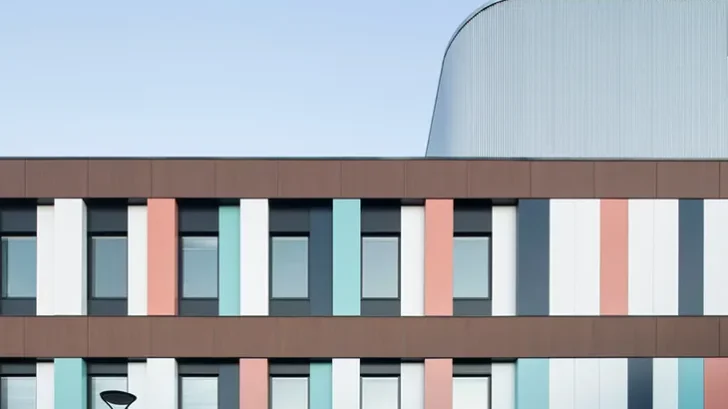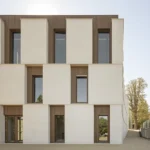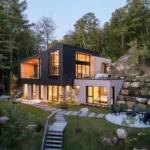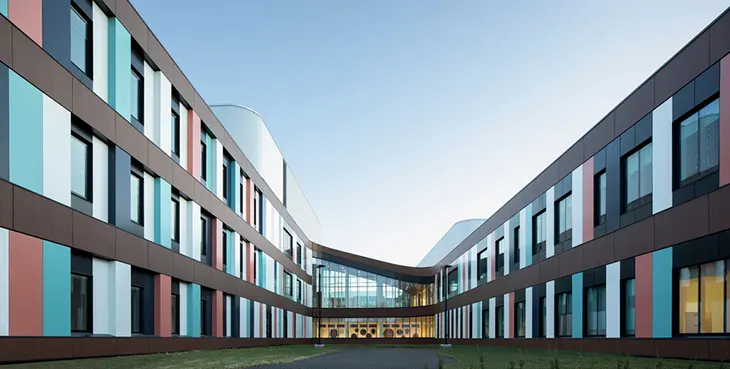
In Sainte-Thérèse, Canada, ACDF Architecture, in collaboration with Stantec, has designed the Centre de réadaptation pour jeunes en difficulté d’adaptation (CRJDA), a facility redefining how architecture can support care, rehabilitation, and dignity. Rejecting the traditional institutional aesthetic, the project establishes a space that fosters empathy, autonomy, and trust.
INSTITUTIONAL ARCHITECTURE
Partner Joan Renaud describes the mission succinctly: “Architecture does not heal. But it can help create the conditions for healing.” This philosophy is visible throughout the project’s material and spatial language. Curved lines, soft pastels, and the gentle rhythm of wooden cladding replace the cold symmetry typical of institutional architecture. The building’s horizontality and lightness convey calm, while natural materials and textured surfaces invite touch and connection.
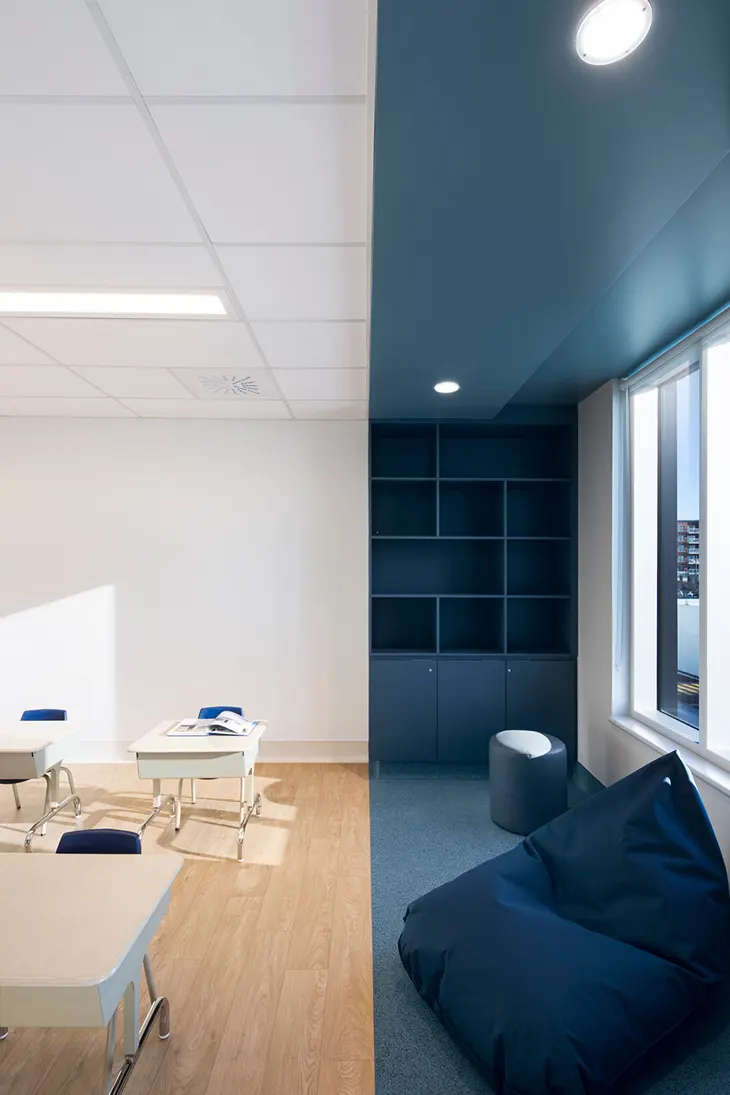
The program unfolds in four wings, with the first dedicated to educational and support activities, classrooms, library, and gymnasium, designed to encourage focus and self-confidence. Each classroom is marked by a distinct color threshold, a subtle cue that aids orientation and gives the youth a sense of ownership over their environment. Informal seating areas and alcoves offer alternative learning modes, supporting attention and emotional balance.
A central passage links this institutional wing to three residential ones, serving as both a physical and symbolic threshold. Large windows and views toward gardens and an elevated terrace dissolve the line between inside and out. In these moments, architecture acts as a buffer, a pause between therapy and everyday life, between movement and reflection.
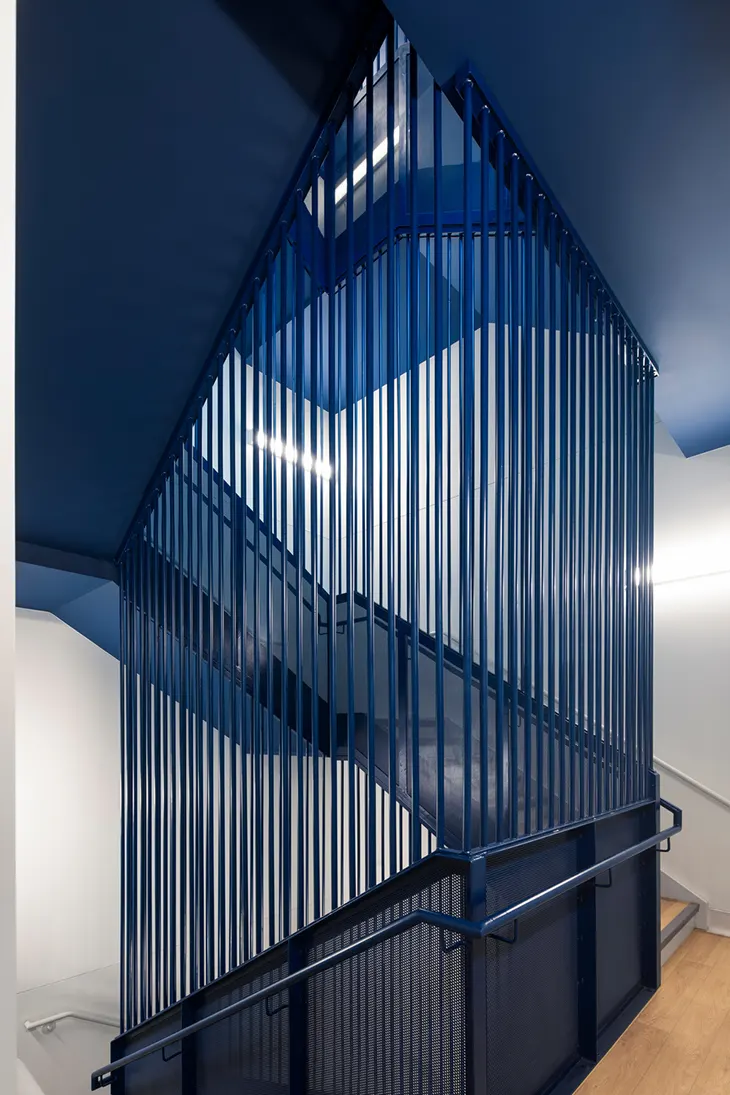
In the living units, ACDF’s design achieves an intimate atmosphere: rooms feature soft wood finishes and natural light, with communal spaces encouraging interaction rather than isolation. Even safety measures are designed to protect without stigmatizing, integrated sightlines and discreet evacuation corridors ensure security through clarity, not control.
Beyond the building, the landscape architecture strengthens the project’s restorative intent. Sports and play areas promote physical release and group connection, while preserved woodlands and walking paths offer places for quiet contemplation. Vegetation forms natural boundaries, concealing fences and creating a protective, non-confining atmosphere.
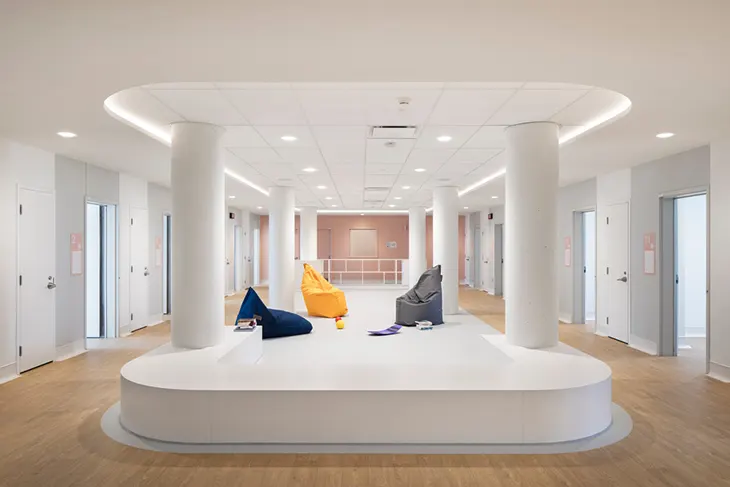
The CRJDA Sainte-Thérèse ultimately functions as a place of transition. It is an environment of care for both the youth and the professionals who guide them, demonstrating how architecture, when designed with empathy and restraint, can quietly contribute to healing.
